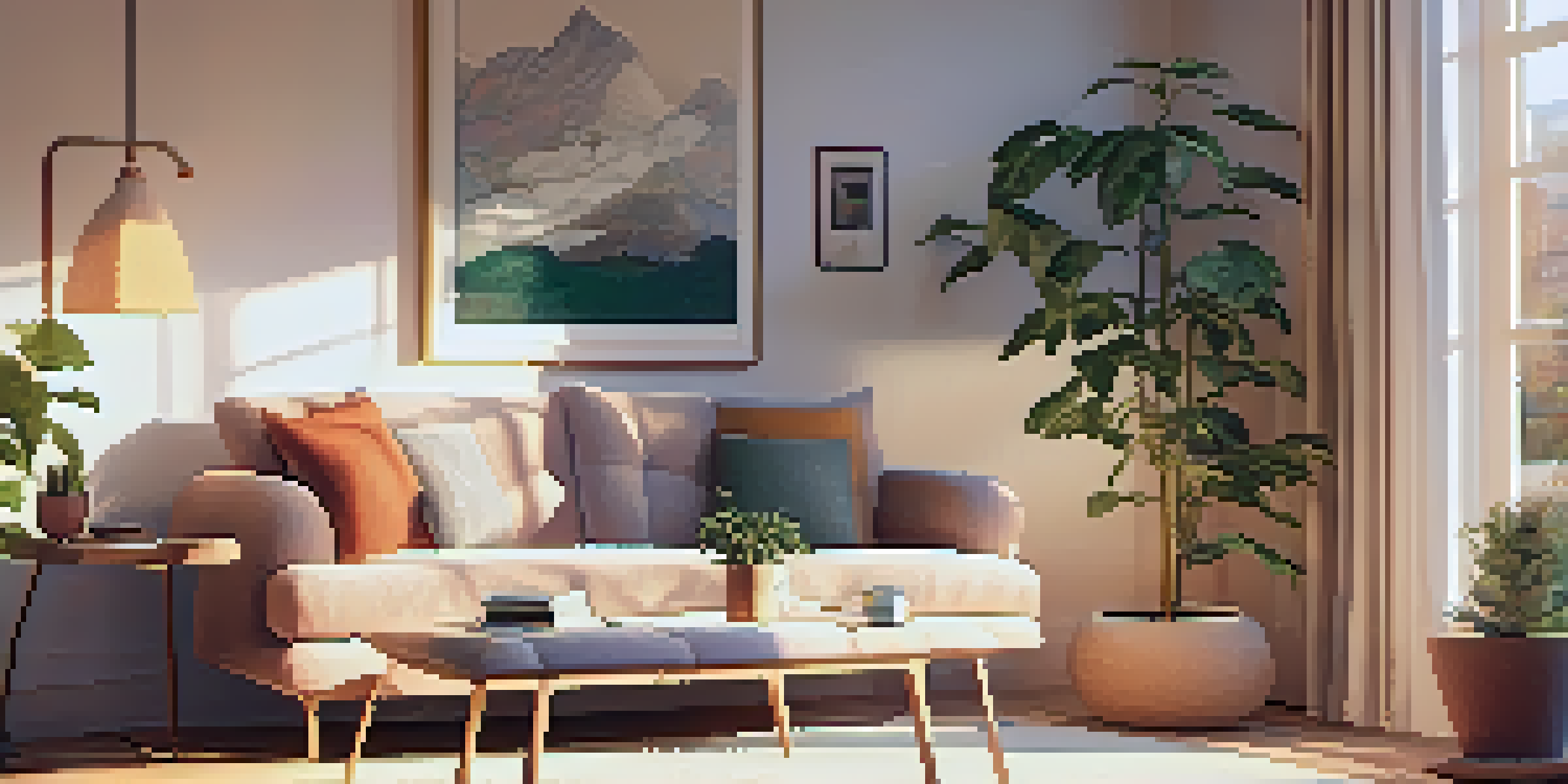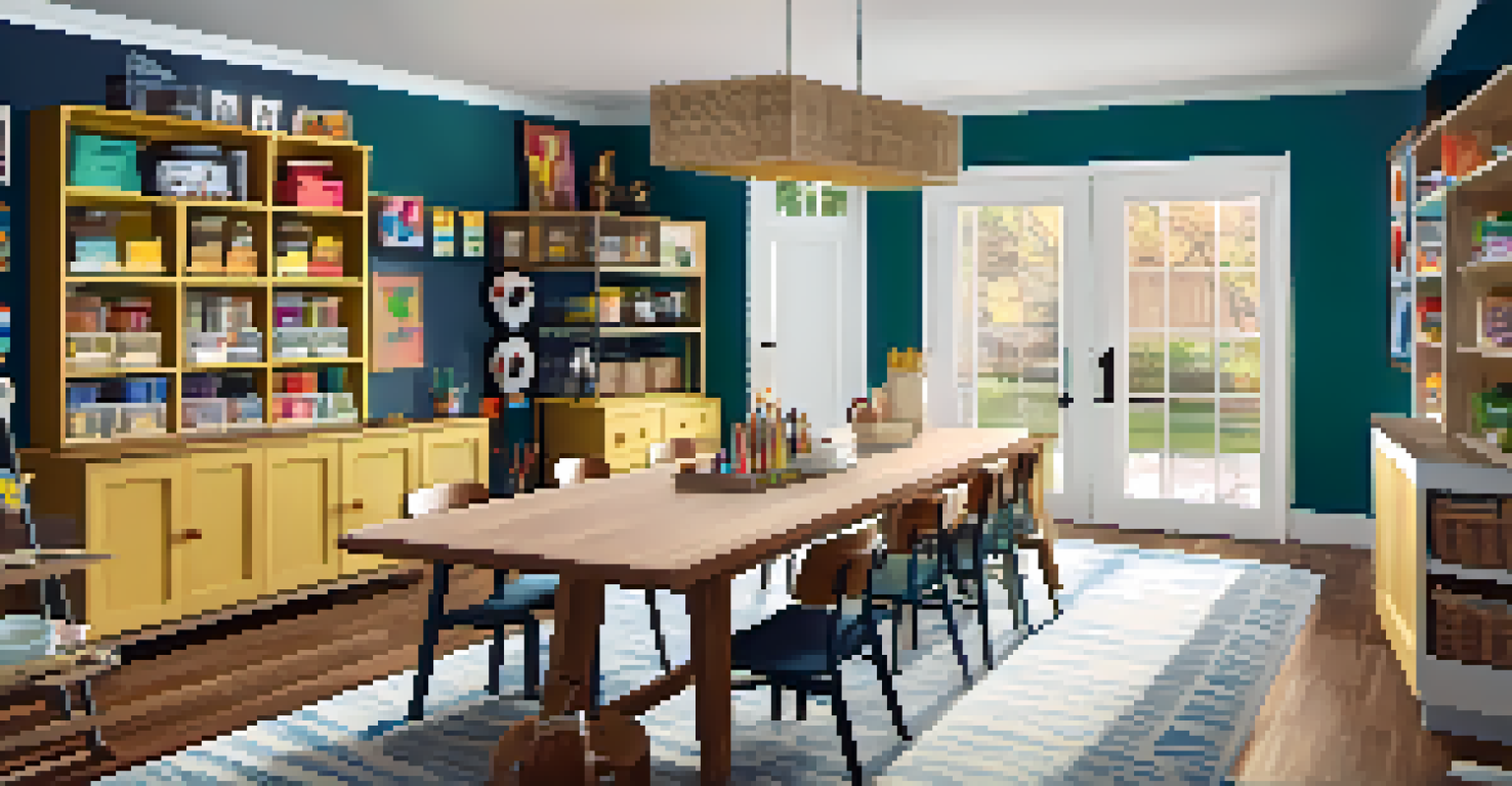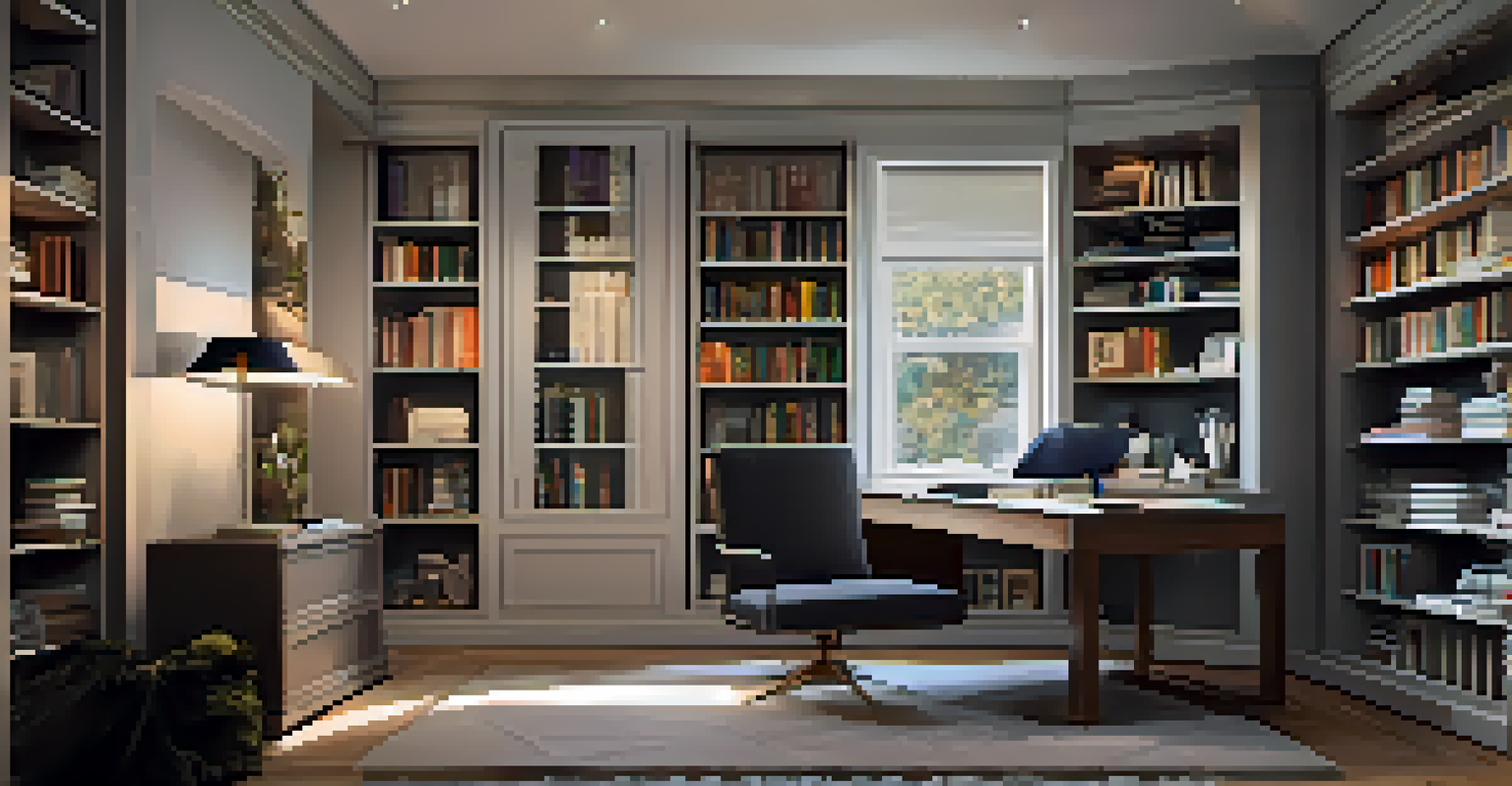Creating Multi-Use Spaces for Increased Home Functionality

Understanding the Need for Multi-Use Spaces
In today's world, our homes are not just places to live; they're multifunctional spaces that need to adapt to our changing lives. With the rise of remote work and increased time at home, the demand for areas that serve multiple purposes has never been greater. Understanding this need is the first step towards creating a functional and enjoyable living environment.
The key to great design is capturing the spirit of the client and the essence of the space.
Imagine transforming your living room into a cozy office, a yoga studio, or even a guest room when needed. This adaptability not only maximizes your available square footage but also enhances the overall experience of your home. By embracing the idea of multi-use spaces, you can create an environment that meets various needs without overwhelming your living area.
Ultimately, recognizing the importance of versatile spaces helps you appreciate how a thoughtfully designed home can improve your daily life. It allows you to focus on what truly matters, whether that’s work, relaxation, or family time.
Assessing Your Space: What Can Be Multi-Use?
The first step in creating multi-use spaces is assessing the areas in your home that could benefit from a little flexibility. This could be a spare bedroom that rarely gets used, a dining room that’s only for special occasions, or even a corner of your living room. Consider how these spaces might be transformed to better serve your lifestyle.

For example, a guest bedroom can double as a home office by incorporating a stylish desk and chair that blend seamlessly with the existing decor. Alternatively, a dining room can be transformed into a craft area or a family game space with the right furniture arrangements. The key is to envision how each space can shift to accommodate your needs without sacrificing comfort.
Embrace Multi-Use Spaces
Creating adaptable areas in your home enhances functionality and meets various lifestyle needs.
By evaluating your home's layout and furniture, you can identify opportunities for creating multifunctional areas. This not only enhances functionality but also contributes to a more organized and harmonious living environment.
Choosing the Right Furniture for Versatility
Selecting the right furniture is crucial for creating spaces that can easily switch functions. Look for items that can adapt, like a sofa bed that offers comfort during the day and a sleeping space at night. Modular furniture is also a fantastic choice, as it can be reconfigured based on your current needs.
Design is not just what it looks like and feels like. Design is how it works.
Consider investing in pieces with built-in storage, such as ottomans that open up to reveal space for blankets or games. This not only keeps your living area tidy but also ensures that you have everything you need at hand, regardless of the space's purpose. The right furniture can make all the difference in how easily you transition from one activity to another.
Ultimately, the goal is to have furniture that complements your lifestyle while being practical. Versatile pieces allow you to make the most of your home without cluttering it with items that serve a single function.
Incorporating Smart Storage Solutions
Smart storage solutions are the backbone of any multi-use space. When you can easily store and access items, it becomes much easier to transition a room from one function to another. Think about vertical storage, like shelves or wall-mounted cabinets, which can free up floor space and keep essentials organized.
For instance, a bookshelf can serve as both a decorative element and a functional storage unit for books, games, or office supplies. Likewise, using baskets or bins can help keep things tidy while allowing for easy access. The idea is to create a system that works for you, reducing visual clutter and enhancing the room's overall functionality.
Smart Storage is Essential
Incorporating effective storage solutions helps maintain organization and facilitates easy transitions between different activities.
By incorporating smart storage solutions, you can maintain a clean and organized environment, making it easier to shift gears throughout the day. This not only improves the look of your space but also boosts your productivity and peace of mind.
Defining Zones Within a Multi-Use Space
Creating distinct zones within a multi-use space can enhance its functionality without sacrificing style. Use furniture placement, rugs, or lighting to define different areas for work, relaxation, and entertainment. This division allows you to switch from one activity to another seamlessly while still enjoying a cohesive look.
For example, a large living room can have a reading nook in one corner with a comfortable chair and lamp, while the opposite side features a desk for work. By using rugs to visually separate these areas, you can create a sense of organization amid the versatility. This zoning approach helps your brain adapt to different activities, making each space feel purposeful.
Ultimately, defining zones within a multi-use space allows you to create a balanced environment that caters to various needs. It helps you maintain focus, whether you're working on a project or unwinding with a good book.
Designing for Comfort and Aesthetics
When creating multi-use spaces, comfort and aesthetics should go hand in hand. A room that looks good but isn't comfortable won’t serve you well in the long run. Consider how colors, textures, and lighting can create a warm and inviting atmosphere, regardless of the room's function.
For instance, using soft textiles such as throws and cushions can make a space feel cozy, whether it’s an office or a relaxation area. Additionally, incorporating plants or artwork can enhance the visual appeal without cluttering the space. This attention to detail ensures that every area feels welcoming and functional.
Design for Comfort and Style
Balancing aesthetics with comfort ensures that multi-use spaces are both inviting and practical for everyday use.
Balancing comfort with aesthetics is key to enjoying your multi-use spaces to the fullest. When you love the look of a room and feel comfortable in it, you’re more likely to use it effectively, whether for work, play, or relaxation.
Adapting to Changing Needs Over Time
One of the greatest benefits of creating multi-use spaces is their adaptability. As your life evolves, so will your needs, and having versatile areas allows you to adjust without the need for a complete redesign. This flexibility is particularly important for families, where activities and requirements can change quickly.
For example, a space that serves as a play area for young children can easily transition into a study area for teens. Similarly, as work-from-home arrangements become more common, you may find that a corner of your bedroom becomes a dedicated workspace. Being open to change ensures that your home continues to meet your lifestyle demands.

By designing your spaces with adaptability in mind, you create a living environment that grows with you. This approach not only promotes sustainability but also enhances your overall enjoyment of your home.